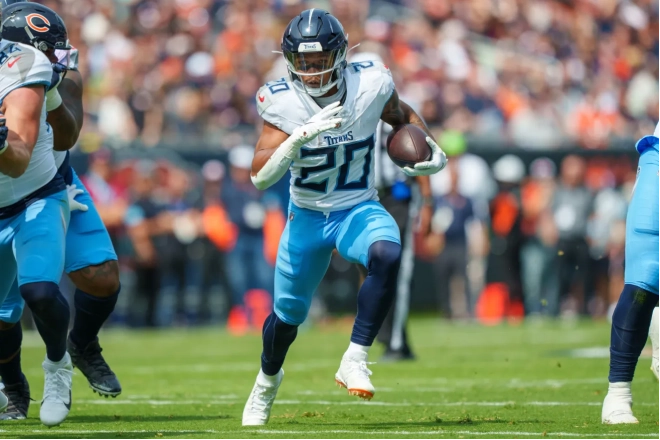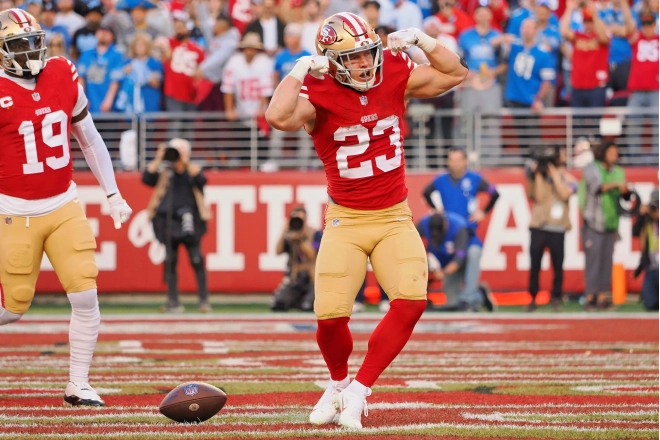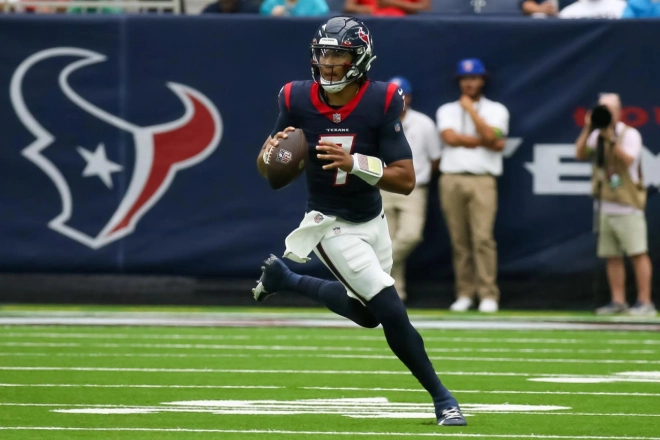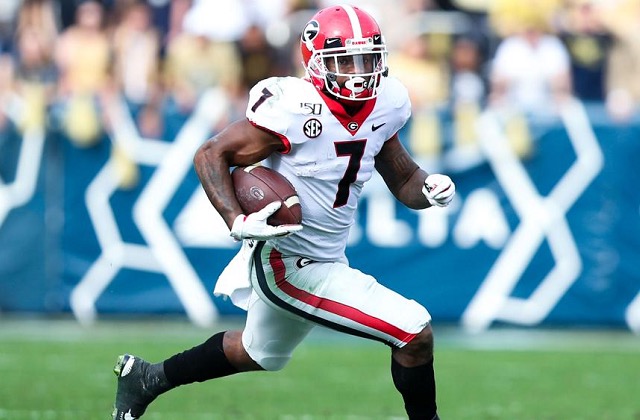Building a winning dynasty team isn’t easy. In most leagues you get three to five draft picks a year to select players that haven’t even taken a single snap in the NFL. The only other way to improve your team is through the waiver wire and trading with other team owners. Most team owners know a thing or two about playing fantasy football, so you aren’t going to just float into the playoffs just for showing up, like you can in some free redraft leagues.
Now, I am not the most football knowledgeable person on the planet. In fact, my football knowledge probably doesn’t even put me in the top half of the two dynasty leagues I play in. So, if I want to win at dynasty fantasy football, I must find other ways than brute football knowledge to win.
I have read that managing a dynasty team is like managing a portfolio of stocks. Now I have done that in the past (managed a portfolio of stocks), and my experience has been the stocks I buy go down and the stocks I sell go up – that was before this cycle in the stock market.
With dynasty fantasy football, I have had a similar experience. Just to give a couple examples, I paid a lot for a young Andrew Luck and a young Jordan Reed so I could anchor my team for years to come with a solid quarterback and tight end.
However, there is one fantasy asset that always goes up in value, and that is draft picks. In addition, you can roll them over each year so that they compound interest.
I manage two dynasty teams. One has a 3-pick per team draft and is a fairly standard flex league PPR scoring. The other has a 5-pick per team draft and is a super flex half-PPR league.
First, I will show you my powder keg room for both these leagues, then I will explain how I got there.
These are the picks I have stored up for my first team:
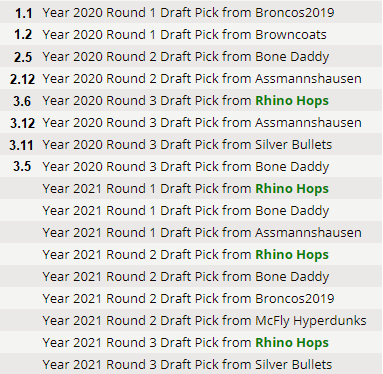
My team is Rhino Hops. Even losing Luck and Reed, I had the 6th best overall record 2019 but didn’t make the playoffs because of the divisional allocation. My team was in the playoffs as the 2nd and 6th seed in 2017 and 2018. So, my team has consistently been better than average, while I have been building up the killer set of picks I listed above. My team is now in a position to get stronger every year even if I win the championship.
These are the picks I have stored up for my second team, which is still just a first-year team:

My rule of thumb is to build up 2x to 3x the number of given picks for each future year. My goal is to draft with only top 1st round picks each year and use the remaining picks to generate a great number of future picks and higher future picks.
This is dynasty fantasy football, right? It takes time to build a dynasty, and patience is essential. However, most dynasty team managers value the present much more than they ought relative to the future. This makes it easy to get a good premium for selling picks each year for future picks.
Just like a savings bond that reaches maturity, our picks reach their peak value on draft day. On draft day, a current year second round pick can be traded for a future first round pick or two future second round picks because someone’s undervalued sleeper is still on the board when your pick comes up and they just have to have that player. That’s not me. I don’t have the football knowledge to know who the undervalued sleeper is, and frankly I think once we get to the bottom half of the first round, it’s more luck than skill. From the bottom of the first round on picks are no better than dart throws. For example, looking at my league’s draft history here is the top player by total fantasy points scored in 2019 in the 2nd half of the 1st round, the 2nd round, and the 3rd round respectively:
- Bottom of 1st: Noah Fant (TE), 112 fantasy points
- 2nd round: A.J Brown (WR), 217 fantasy points
- 3rd round: Darren Warren (TE), 222 fantasy points
However, five of the first six players taken turned out to be starters for the season, Josh Jacobs (192 fps), Kyler Murray (336 fps), David Montgomery (172 fps), Miles Sanders (219 fps), DK Metcalf (190 fps), N’Keal Harry (39 fps).
Following this rule, here are my draft picks over the last four years:
- 2015: Amari Cooper (1.01), Todd Gurley (1.02)
- 2016: Corey Coleman (1.02) – woops
- 2017: Leonard Fournette (1.01)
- 2018: no pick made
- 2019: no pick made
I hit on three out of four picks and I have the #1 and #2 pick this year, and three first round picks stocked up for next year. So, in all likelihood I will add three more dynasty studs to my team in the next two years, and not even deplete my arsenal of draft picks. I am building a dynasty.
Its true studs can be found in the second and third round, but for every stud in the second and third round, there are 10 duds. And all those dart throws take up space on your roster, so most of the picks just get thrown away. If you stay on top of it, you will find that there are almost as many good players available on the waiver wire over the next couple of weeks as there are in the bottom half of the draft: Josh Allen (QB, 332 fps), Raheem Mostert (RB, 168 fps), D.J Chark (WR, 225 fps)
Instead of making dart throws, trade the picks up for future years. Here are three types of pick-for-pick trades I make to run my pick generator and be able to make top picks almost every year:
- Move up a round
- Generate picks
- Move up within a round
These are specific ways to accomplish each type of the above trades:
Move up a round:
- A high N pick for a future N-1 pick: For example, trading a 2.03 for a future 1st. This is generally only possible right before or during the draft. And the future pick might need to be two or three years out.
- Two N picks for a future N-1 and N pick: For example, trading two 3rds for a future 2nd and 3rd. The person you trade with is glad to get two picks right then, and the cost feels smaller.
- Two N picks for a future N-1 pick: These are generally easy to do, but your total number of picks go down. For example, I could probably trade my 2.03 and 2.04 for a future 1st right now, but I don’t want to do that if I don’t have to. As an alternative, if I had to go that route, I would at least try to get a “worthless” last round pick in the deal, so my 2.03 and 2.04 for a future 1st and 3rd or 5th (whatever the last round of your draft is). The person on the other end of the deal might underestimate the value of the 5th because they are thinking of it only as a very low probability dart throw, and so they might just throw it in.
Generate picks:
- A high N pick for two N picks: For example, a 2.03 for two future 2nd
- Two N picks for three future N picks: For example, two 2nds for three future 2nd
- An N pick for a future N pick and N+1 pick: For example., a 3rd for a future 3rd and 4th.
- Two N picks for two future N picks and an N+1 pick: For example, two 1st round picks for two future 1st round picks and a 2nd.
Move up within a round:
- A low N pick for a future N pick: This is easy. If my pick is in the bottom half of a round, I can trade it for a future pick in the same round. The odds are greater than 50% that the pick I get back will be a higher pick than the pick I traded away. This is perfect for those low last round picks.
So which trade strategy should you use when?
Unless you have at least 2x the number of picks in each of your future years, focus on generating picks. For example, if you have a 5-round draft, until you have 10 picks in all future years, keep generating picks.
When you have more than 2x the number of picks in the current year, focus on moving up. Start with your lowest round picks, because if you are caught holding more picks than you want in the draft, you want to be holding your higher picks. Also, if you have a lot of picks, there is a dearth of picks from among the other teams. If you trade away your higher picks first, that dearth won’t be felt as acutely, so it will be harder to trade away the lower picks later. And when you are moving up, still try to maintain the total number of picks, but it isn’t critical.
When the season is running, if you have more than 2x the number of picks for that year, then you can use some of those picks to trade for players to help your roster. But don’t trade for players with your picks until you have more than 2x the picks. And think about the future value of those picks. When you trade for a player because you think you have a chance at winning, you are generally trading away an asset that is going to keep going up in value for an asset that is going down in value. But you must cash in those picks sometime, just don’t destroy your pick generator doing it.
There are additional advantages to this strategy.
Buy players low: Players have an opposite value cycle to draft picks. They are least valuable right before a draft because owners have to drop players to make room for the new players they will pick up in the draft, and they are most valuable around mid-season when its crunch time to get into the playoffs, and most owners aren’t concerned about a draft that is almost a year away. So, while most owners are making hard choices about who to keep and who to cut in order to make space on their roster, you can use the other owner’s pain to your advantage. This is the perfect time to use one or two of your picks to fill some holes in your roster with proven veteran players. Because of this, right before the draft you can usually get some pretty solid veterans in the 26-to-27-year-old age range for a 2nd round pick. Furthermore, since the owner is trying to make space, they will prefer the pick you send them is a future year pick, not a current year pick, because a current year pick won’t help them make space on their roster. Then, if the player stays healthy and keeps performing, you can keep that player for two years, and mid-season after some owner has an injury on their roster, trade the player away for a 2nd round pick.
Receive more trade offers: Other team owners will notice your stash of picks and your active trade style, and when they want something, they will be sure to throw some trade offers your way. I have been surprised at some of the offers that I have received, and these have been a great benefit to my team.
This is the transaction log of trades I made over the past year: (The name of the league is TDs and Beer, my team is Rhino Hops):

To get a better picture of my trade balance sheet, I like to put them in a spread sheet and cancel out the same players and picks that come in and go out:
|
IN |
OUT |
|||
|
2020 |
1.01 |
|||
|
2020 |
1.02 |
|||
|
2021 |
1st |
2020 |
1.05 |
|
|
2021 |
1st |
2019 |
1.07 |
|
|
2020 |
1.11 |
|||
|
2021 |
2nd |
|||
|
2021 |
2nd |
2019 |
2.08 |
|
|
2021 |
2nd |
2019 |
2.09 |
|
|
2019 |
2.10 |
|||
|
2019 |
2.11 |
|||
|
2020 |
3.05 |
2019 |
3.05 |
|
|
2019 |
3.07 |
|||
|
2021 |
3rd |
2020 |
3.07 |
|
|
2020 |
3.11 |
2019 |
3.08 |
|
|
Todd Gurley |
Brandin Cooks |
|||
|
Darrell Henderson |
Darius Slayton |
|||
|
Will Dissly |
Vance McDonald |
|||
|
Sammy Watkins |
Broncos |
|||
|
Taylor Gabriel |
||||
|
MVS |
Jay Ajayi |
|||
|
Vikings |
Jordan Reed |
|||
|
Gronkowski |
||||
|
Josh Gordon |
||||
From this view, it is easy to see that I picked up the top two picks in this year’s draft and added an extra 1st round pick. Two of the three first round picks I surrendered were bottom have picks.
I lost a 2nd round pick, but all the 2nd round picks I gave up where bottom half 2nd round picks. I also lost a 3rd pick.
So overall, I made great gains with my draft picks.
On the player end of the trades, I also got the better side of the deal. I have five players still on my roster, three of which have decent dynasty value, Todd Gurley, Darrell Henderson and Will Dissly. I also received Marquez Valdes-Scantling, who might have some dynasty value, but was in a pinch for a tough bye-week, so I dropped him. He was picked up on waivers and is rostered on another team.
Leaving my team, Brandin Cooks after his fifth concussion is a risky dynasty asset. Darius Slayton might have some good upside, and Vance McDonald is only slightly better than tight ends that can be streamed off the waiver wire.
My other dynasty team is a first-year super flex. I didn’t draft to win my first year. Being a super flex league where quarterbacks get 5 fantasy points per touchdown, I focussed on getting a solid core of quarterbacks with my first three picks, Watson, Goff and Mayfield. (Goff and Mayfield didn’t pan out as I hoped, but still not a bad core overall). I also picked up Leonard Fournette at a bargain price. My other priority was to build my draft pick generator. Here are the trades I made over the last year:
|
IN |
OUT |
|||
|
2020 |
2.03 |
D.J. Chark |
||
|
2020 |
2.07 |
Marvin Jones |
||
|
2021 |
4th |
2020 |
4.04 |
|
|
2022 |
4th |
2020 |
5.04 |
|
|
2020 |
4.10 |
Jimmy Graham |
||
|
2020 |
4.02 |
Mohammed Sanu |
||
|
John Brown |
2020 |
2.07 |
||
|
2020 |
5.01 |
|||
|
2020 |
4.07 |
Josh Reynolds |
||
|
2021 |
2nd |
Brandin Cooks |
||
|
2020 |
4.03 |
|||
|
2020 |
2.09 |
John Brown |
||
|
2021 |
4th |
2020 |
5.01 |
|
|
2021 |
4th |
2020 |
4.10 |
|
|
2022 |
5th |
|||
|
2021 |
4th |
2020 |
4.07 |
|
|
2022 |
5th |
|||
|
2020 |
5.08 |
2020 |
3.04 |
|
|
2021 |
4th |
2020 |
4.02 |
|
|
2022 |
2nd |
|||
|
2021 |
4th |
2020 |
4.03 |
|
|
2022 |
4th |
2020 |
5.08 |
|
I made a mistake trading away D.J. Chark for a 2nd, but I had just picked him up on waivers, so didn’t have a good sense of his value. However, it’s okay. I will likely trade that 2020 2.03 pick for a 2021 1st round pick. Otherwise I traded away veteran players that are declining in dynasty value.
Now, if we remove the duplicate picks, we can see a clear picture of my trade balance sheet over the last year:
|
IN |
OUT |
|||
|
2020 |
2.03 |
2020 |
3.04 |
|
|
2020 |
2.09 |
2020 |
4.04 |
|
|
2021 |
2nd |
2020 |
5.04 |
|
|
2022 |
2nd |
Brandin Cooks |
||
|
2021 |
4th |
D.J. Chark |
||
|
2021 |
4th |
Jimmy Graham |
||
|
2021 |
4th |
Josh Reynolds |
||
|
2021 |
4th |
Marvin Jones |
||
|
2021 |
4th |
Mohammed Sanu |
||
|
2021 |
4th |
|||
|
2022 |
4th |
|||
|
2022 |
4th |
|||
|
2022 |
5th |
|||
|
2022 |
5th |
|||
If I could have the D.J. Chark trade back, I certainly would. But otherwise, I didn’t give up much in dynasty value, and I have fully seeded my pick generator, accumulating four 2nd round picks and a ton of 4th round picks. I envision trading my 2.03 and 2.04 for two 2021 1st round picks, and trading my 2.09 for at least a future 2nd and 3rd. I envision moving many of the 4th round picks up to 3rd round picks over time, and all the picks will rise and multiply over time. And that from 2021 on, my team will have multiple 1st round picks every year.
So now I am waiting for draft day, dreaming about how two or three of these players, D’Andre Swift (RB), Jonathan Taylor (RB), Jerry Jeudy (WR), CeeDee Lamb (WR), might help my teams next year. Should I take the two top running backs, the two top wide receivers, or one of each? What a great problem to have.
I hope this article was helpful and that you enjoyed reading it as much as I did writing it. Wishing you a great 2020 dynasty rookie draft.

